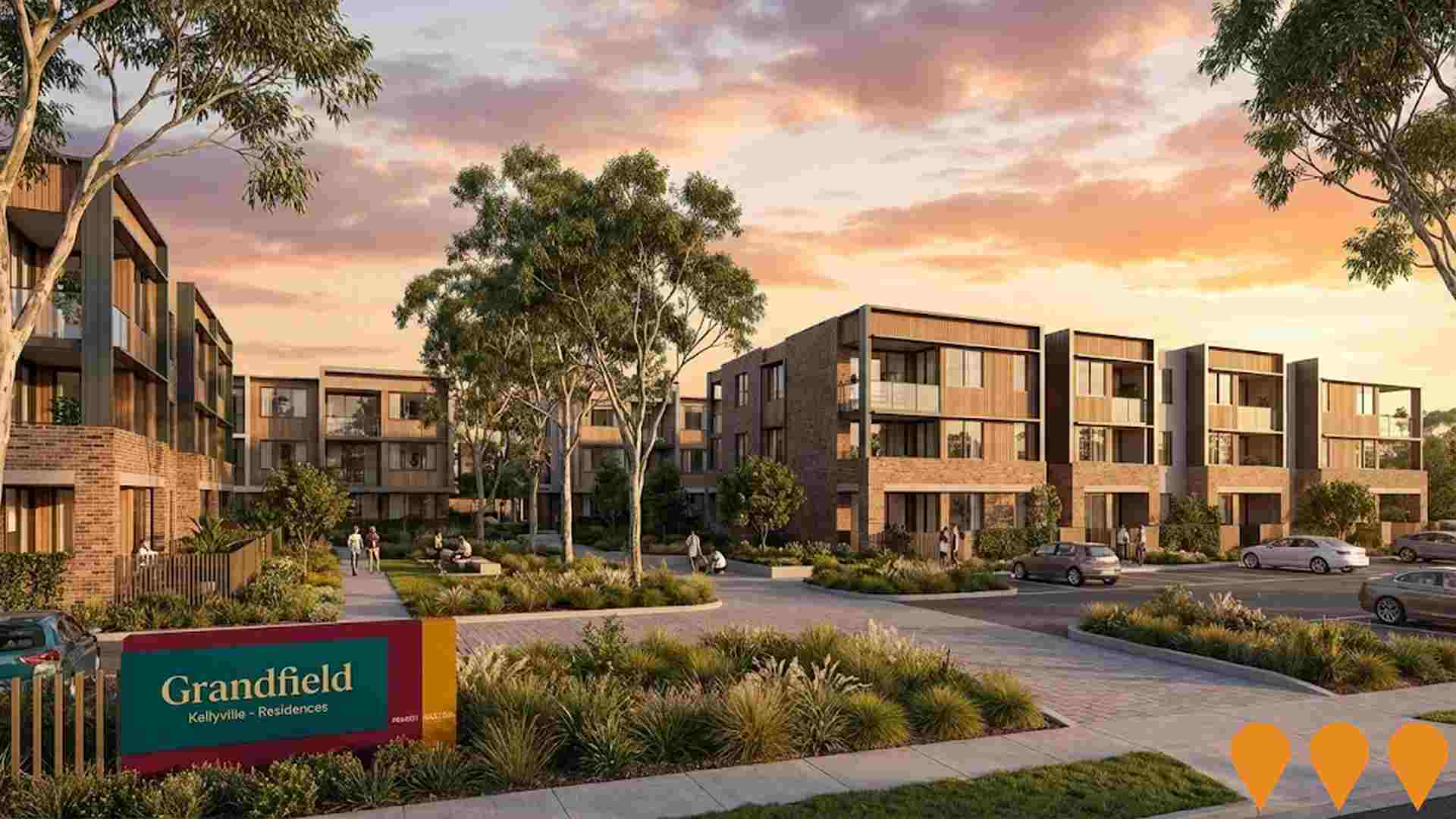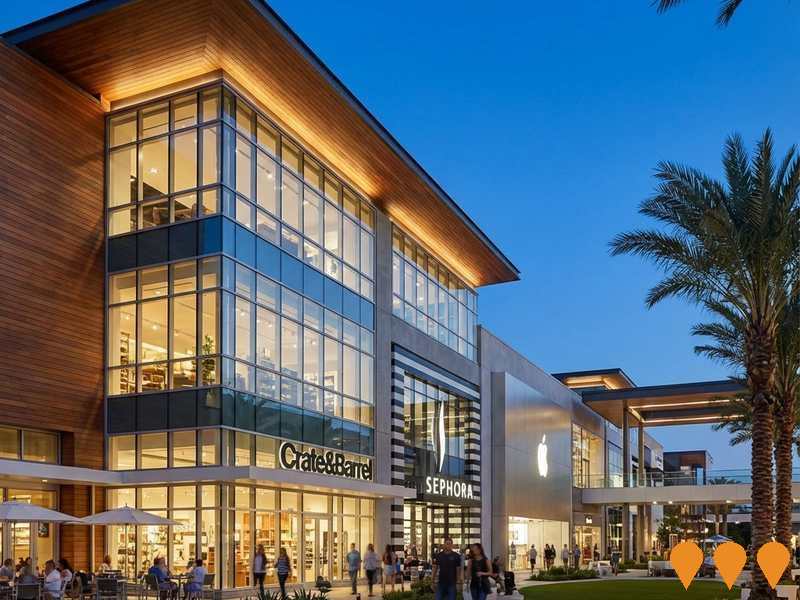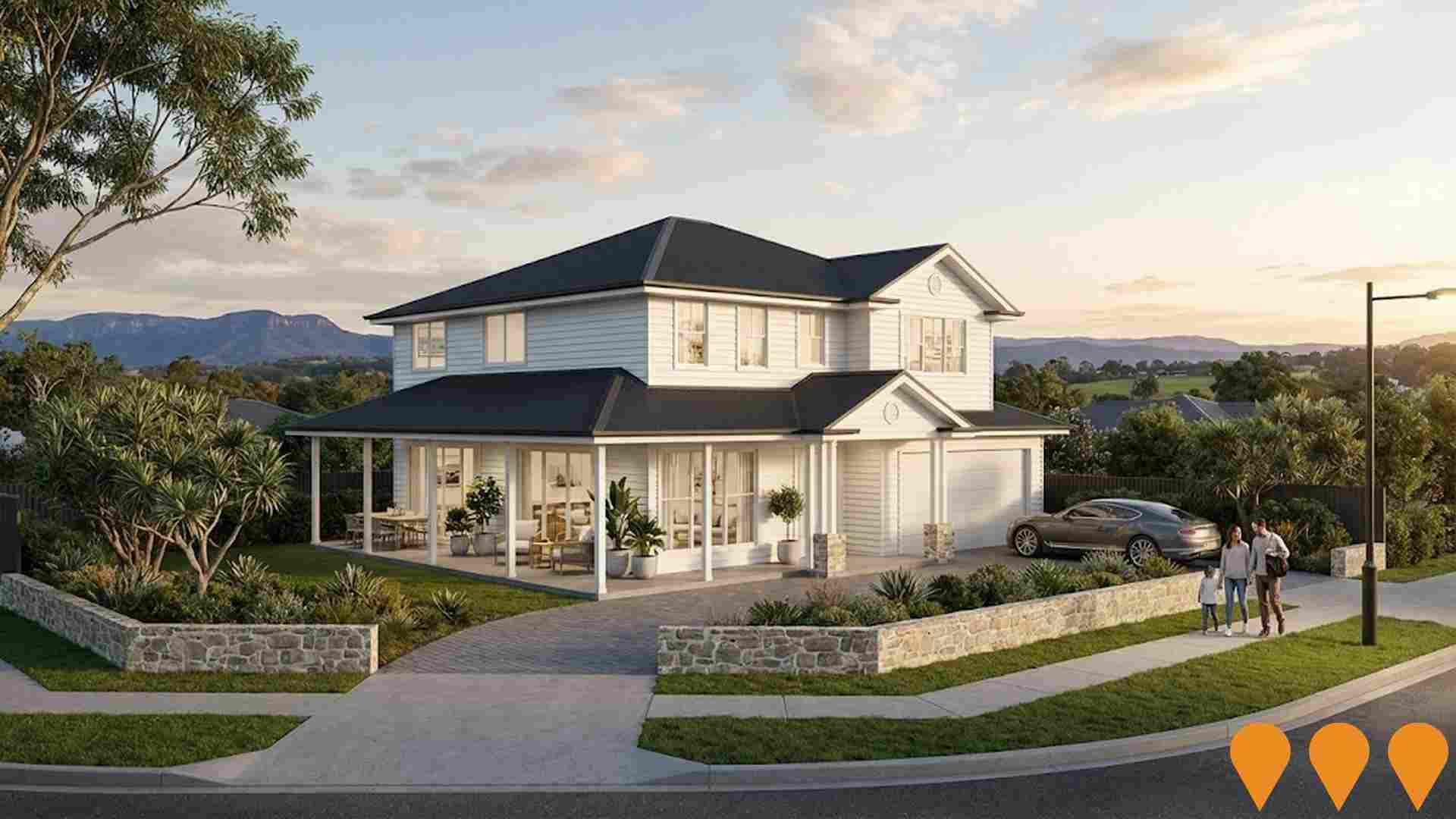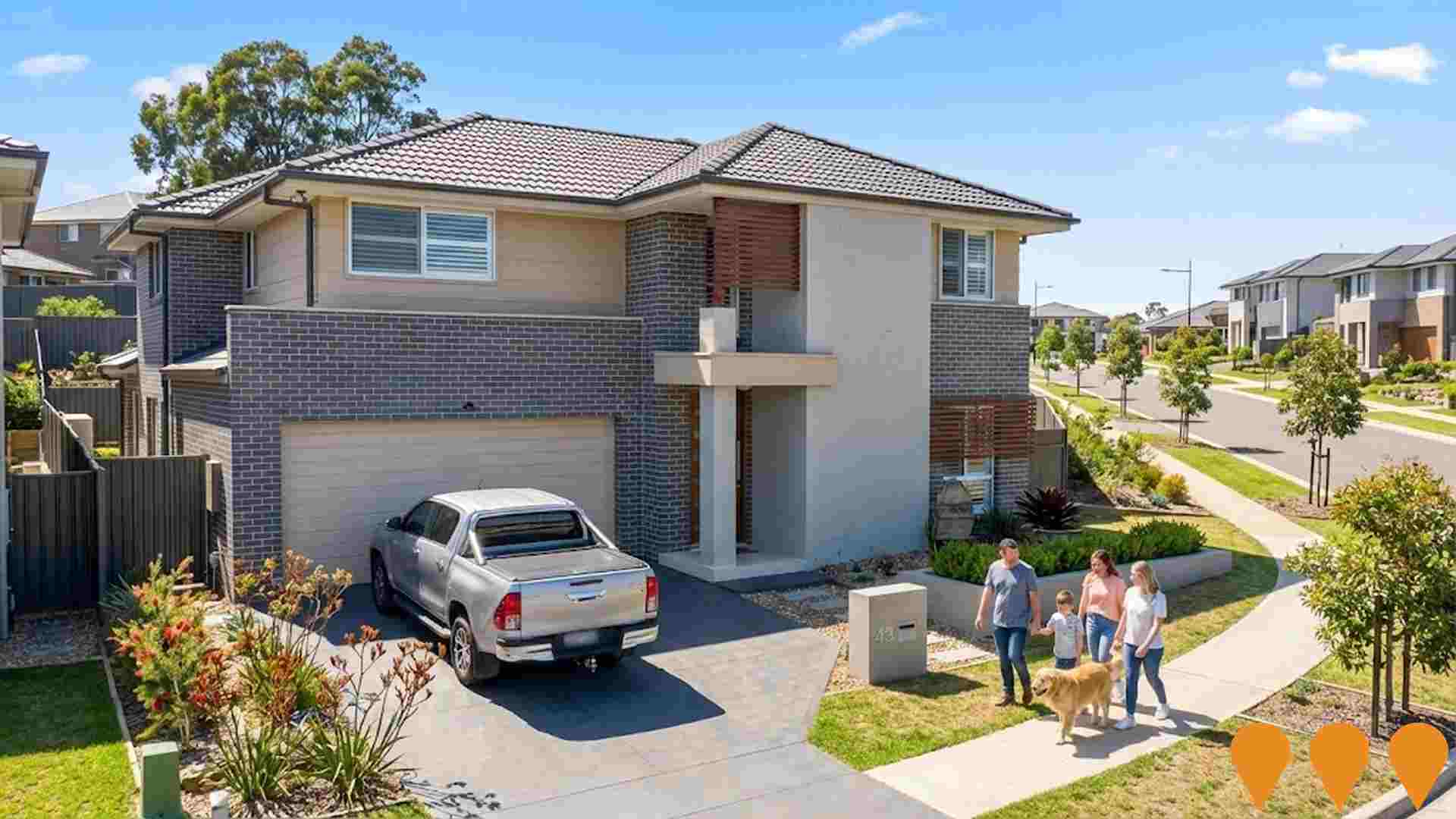Chart Color Schemes
est. as @ -- *
ABS ERP | -- people | --
2021 Census | -- people
Sales Activity
Curious about local property values? Filter the chart to assess the volume and appreciation (including resales) trends and regional comparisons, or scroll to the map below view this information at an individual property level.
Find a Recent Sale
Sales Detail
Population
Kellyville - East is positioned among the lower quartile of areas assessed nationally for population growth based on AreaSearch's assessment of recent, and medium term trends
Kellyville - East's population, as per AreaSearch's analysis, is approximately 17,871 as of August 2025. This figure indicates an increase of 162 people since the 2021 Census, which recorded a population of 17,709. The change is inferred from the estimated resident population of 17,683 in June 2024 and the addition of 131 validated new addresses post-Census date. This results in a population density ratio of 3,113 persons per square kilometer, placing Kellyville - East in the upper quartile relative to national locations assessed by AreaSearch. Overseas migration contributed approximately 61.9% of overall population gains during recent periods, driving primary growth in the area.
AreaSearch uses ABS/Geoscience Australia projections for each SA2 area, released in 2024 with a base year of 2022. For areas not covered by this data, AreaSearch utilises NSW State Government's SA2 level projections released in 2022 using 2021 as the base year. Growth rates by age group from these aggregations are applied to all areas for years 2032 to 2041. Future population dynamics anticipate lower quartile growth, with Kellyville - East expected to grow by 566 persons to 2041 based on latest numbers, indicating a total increase of 2.1% over the 17-year period.
Frequently Asked Questions - Population
Development
AreaSearch assessment of residential development drivers sees a low level of activity in Kellyville - East, placing the area among the bottom 25% of areas assessed nationally
Kellyville - East recorded approximately 25 residential properties granted approval annually. Between FY-21 and FY-25128 homes were approved, with an additional 31 approved in FY-26. The area has experienced population decline, suggesting new supply has likely met demand, offering buyers good choice.
New properties are constructed at an average value of $665,000, moderately above regional levels, indicating emphasis on quality construction. In FY-26, $2.2 million in commercial approvals were registered, indicating minimal commercial development activity. Compared to Greater Sydney, Kellyville - East has significantly less development activity, 85.0% below the regional average per person. This scarcity of new dwellings typically strengthens demand and prices for existing properties, though building activity has accelerated recently. This level is similarly under the national average, indicating the area's established nature and suggesting potential planning limitations.
Recent construction comprises 95.0% standalone homes and 5.0% medium and high-density housing, maintaining the area's traditional suburban character focused on family homes appealing to those seeking space. With around 454 people per dwelling approval, Kellyville - East shows a developed market. Future projections show Kellyville - East adding 374 residents by 2041. Based on current development patterns, new housing supply should readily meet demand, offering good conditions for buyers and potentially facilitating population growth beyond current projections.
Frequently Asked Questions - Development
Infrastructure
Kellyville - East has very high levels of nearby infrastructure activity, ranking in the top 20% nationally
Changes to local infrastructure significantly impact an area's performance. AreaSearch has identified 26 projects likely influencing the area. Notable projects include William Clarke College Bryson Building, Sienna Apartments Kellyville, Kellyville Station Precinct, and Grandfield Kellyville. The following list details those most relevant.
Professional plan users can use the search below to filter and access additional projects.
INFRASTRUCTURE SEARCH
 Denotes AI-based impression for illustrative purposes only, not to be taken as definitive under any circumstances. Please follow links and conduct other investigations from the project's source for actual imagery. Developers and project owners wishing us to use original imagery please Contact Us and we will do so.
Denotes AI-based impression for illustrative purposes only, not to be taken as definitive under any circumstances. Please follow links and conduct other investigations from the project's source for actual imagery. Developers and project owners wishing us to use original imagery please Contact Us and we will do so.
Frequently Asked Questions - Infrastructure
Norwest City
Mulpha's $3+ billion masterplanned transformation of the 377-hectare Norwest Business Park into Norwest City - Australia's flagship smart city and innovation hub. Multi-decade staged redevelopment delivering commercial precincts, residential communities (including Norwest Quarter zero-carbon neighbourhood and The Greens), expanded Norwest Marketown town centre, hotel, public parks, precinct-wide LoRaWAN smart infrastructure, sustainability programs and integrated transport. Current employment 30,000+ workers across 800+ businesses, targeting 60,000+ workers and significant residential population by 2040s.

Hills Showground Station Precinct
A major transit-oriented mixed-use development by Landcom and Sydney Metro, delivered in partnership with Deicorp. The precinct is divided into three main areas: the Doran Drive Precinct (marketed as 'Hills Showground Village', comprising ~430 homes and nearing completion), the Hills Showground Precinct East (marketed as 'Showground Pavilions', comprising 873 homes, currently under construction), and the future Precinct West. The project will deliver up to 1,620 new dwellings, 14,000sqm of retail, commercial, and community spaces, and extensive public domain works including a new village plaza and neighbourhood park adjacent to the Metro station.
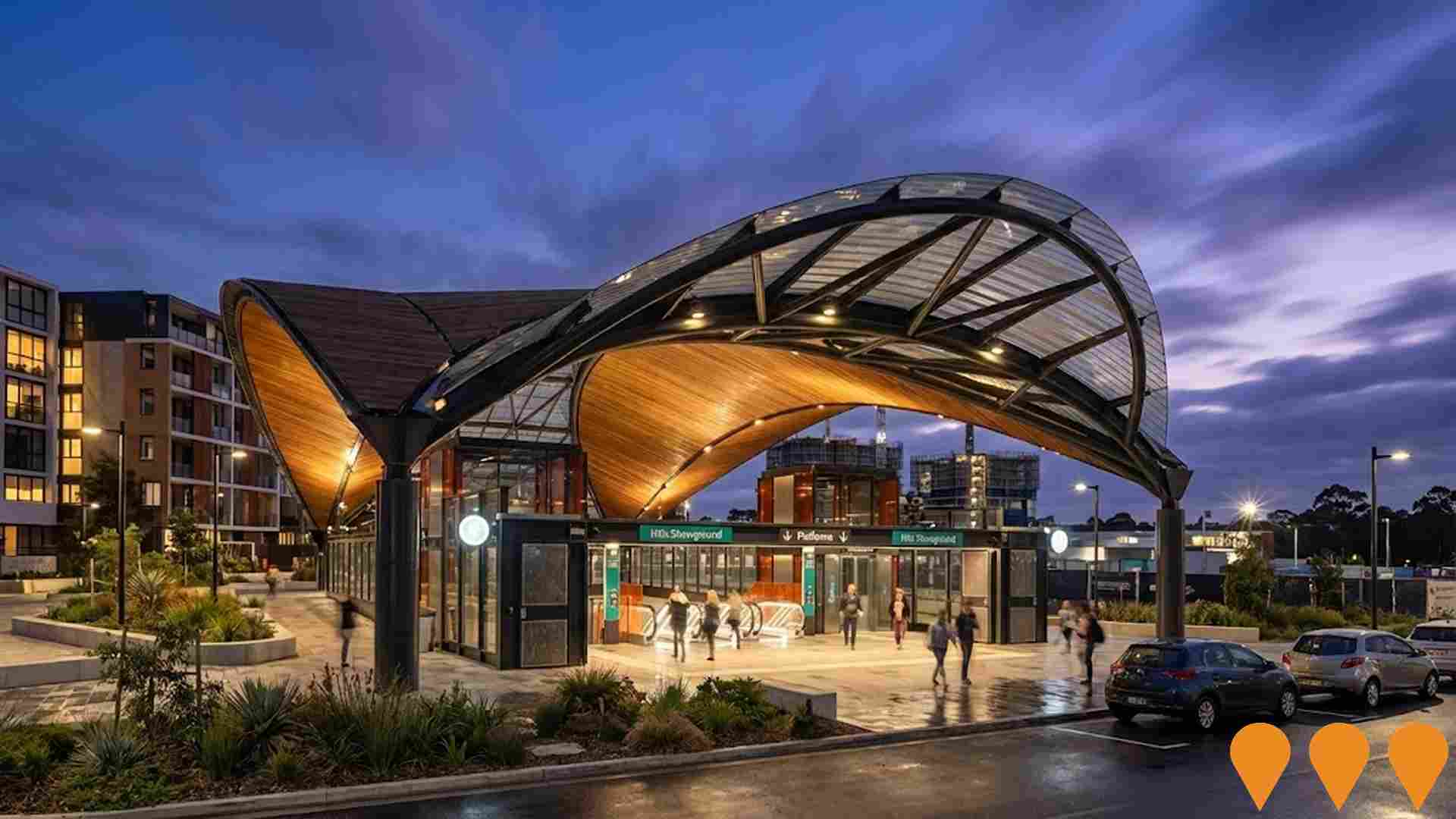
Kellyville Station Precinct
The Kellyville Station Precinct is a major mixed-use development project led by Landcom and Sydney Metro. The approved concept proposal includes the delivery of approximately 1,625 to 1,900 new dwellings (including 5% affordable housing), 10,700m2 of retail and commercial floor space, and 29,500m2 of new public open space. The precinct is designed as a transit-oriented development (TOD) centered around the Kellyville Metro Station, featuring a new town centre, community facilities, and enhanced pedestrian and cycling connections to Elizabeth Macarthur Creek.
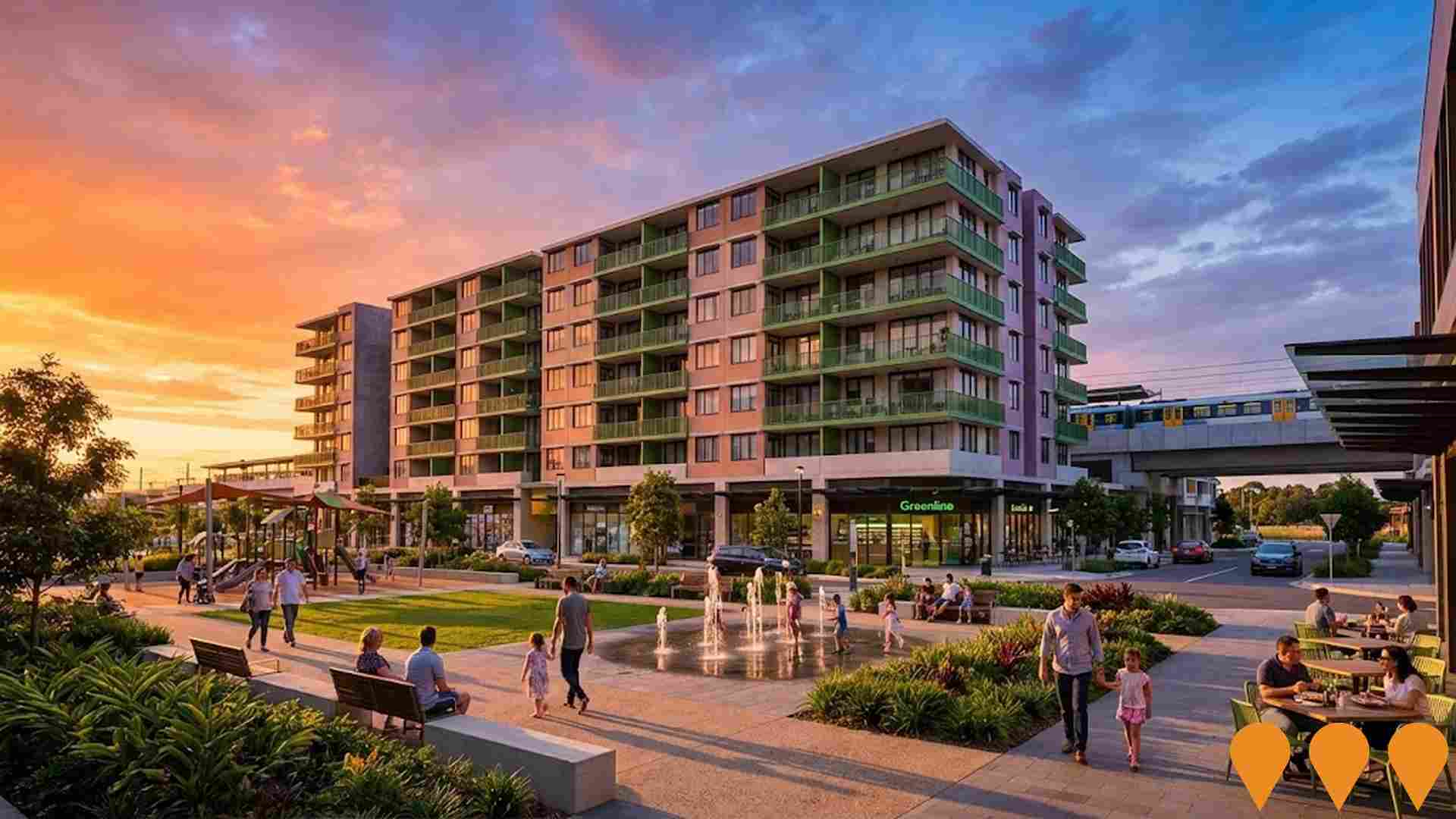
Castle Hill North Precinct Plan
The Castle Hill North Precinct Plan aims to deliver higher density residential development to support population growth in the Castle Hill area. The plan includes rezoning for residential and mixed-use developments, infrastructure upgrades such as road improvements, and enhanced public transport connectivity, including potential links to the Sydney Metro Northwest. The project seeks to create a vibrant, sustainable urban precinct with improved community facilities.

Castle Hill Station Precinct
Development opportunities around Castle Hill Metro Station situated beneath Arthur Whitling Park opposite Castle Towers Shopping Centre. Underground station 25 metres below ground level with integrated park reconstruction above. Part of Landcom's urban renewal program.
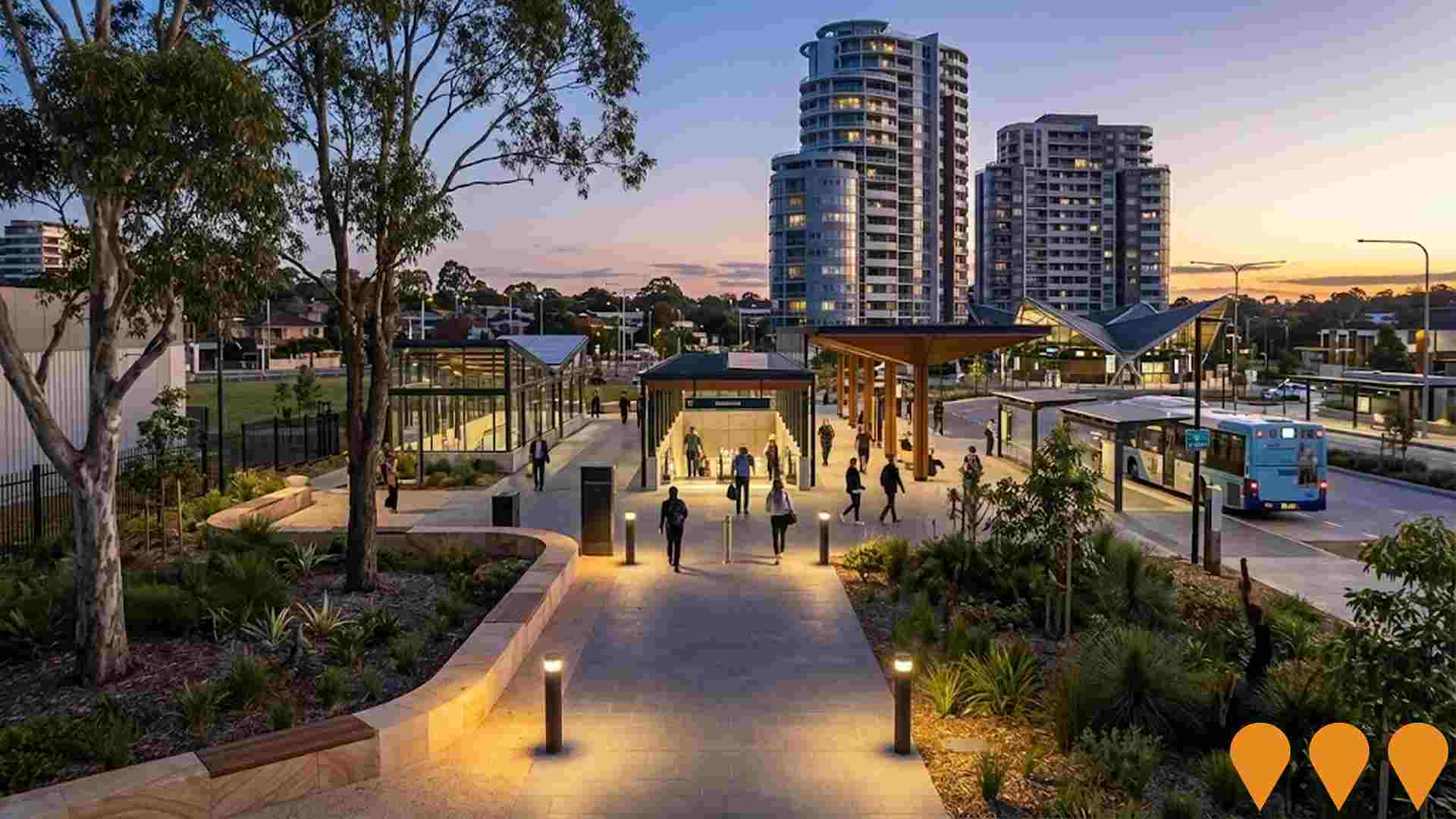
Sienna Apartments Kellyville
Contemporary apartment development offering modern homes with quality finishes and community amenities in the heart of Kellyville.

William Clarke College Bryson Building
Construction of the four-story Bryson Building at William Clarke College, named after founding Headmaster Philip Bryson. The building will provide classrooms, staff rooms, library and ancillary teaching spaces located in the center of the site. Part of State Significant Development SSD-35715221, the project includes site preparation, bulk earthworks, structural works including concrete footings, lift pits, electrical and hydraulic installations, and landscaping works.

Beaumont Hills Public School Expansion
Integration and upgrade works at Beaumont Hills Public School in the Hills district of north west Sydney. The project delivers additional and modernised learning spaces, accessibility improvements and specialist integration facilities to better support students with disability, building on earlier Building the Education Revolution classroom additions and subsequent toilet, LED lighting and ventilation upgrades.
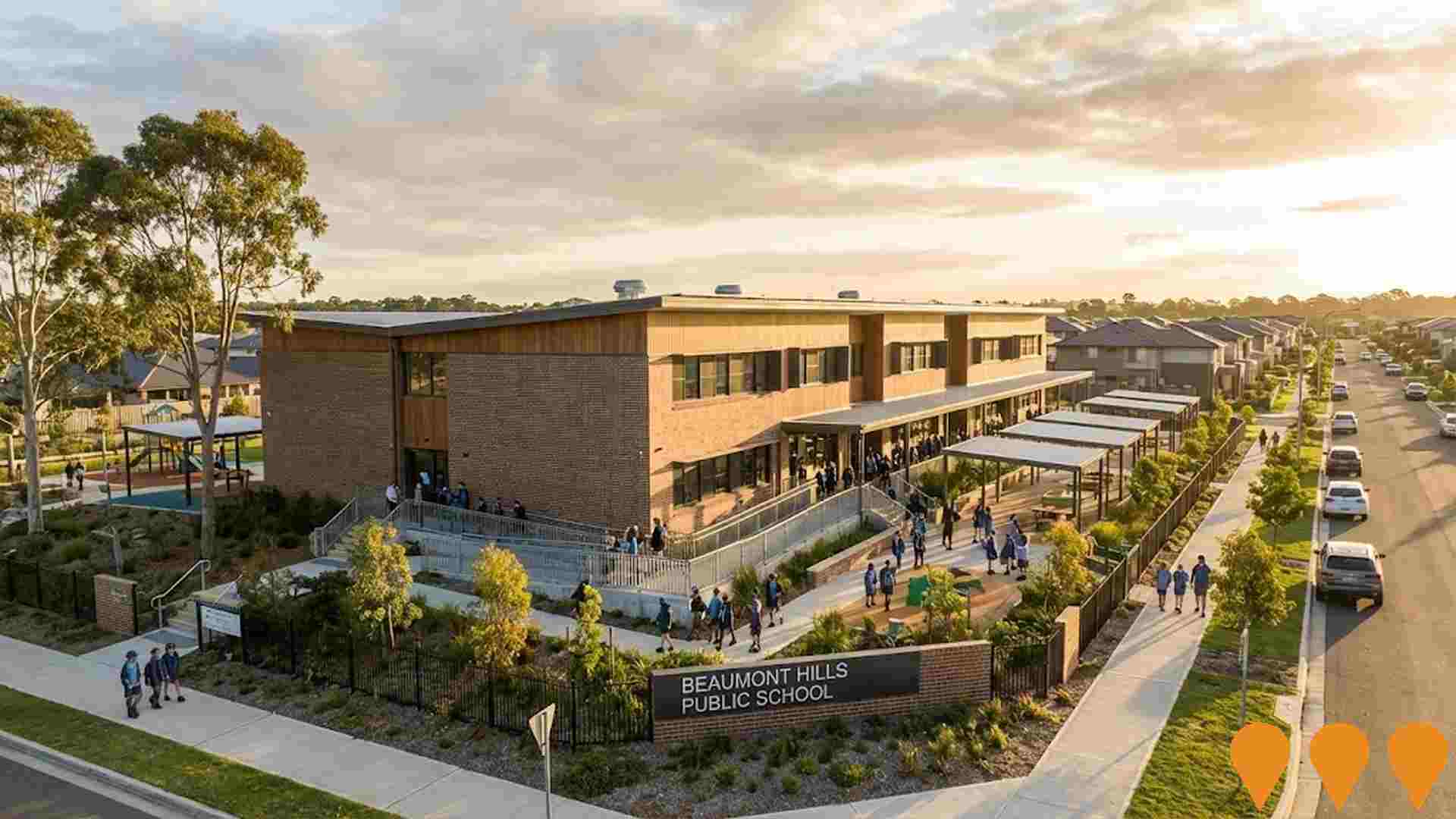
Employment
The labour market in Kellyville - East shows considerable strength compared to most other Australian regions
Kellyville - East boasts a highly educated workforce with professional services well represented. The unemployment rate stood at 3.3% in the past year, with an estimated employment growth of 2.5%.
As of June 2025, 10,409 residents were employed, with an unemployment rate of 0.9% below Greater Sydney's rate of 4.2%. Workforce participation was at 68.8%, exceeding Greater Sydney's 60.0%. Key employment sectors included health care & social assistance, professional & technical services, and education & training, with the latter showing a notable concentration at 1.2 times the regional average. However, transport, postal & warehousing employed only 3.2% of local workers, below Greater Sydney's 5.3%.
The area appeared to offer limited local employment opportunities based on Census data analysis. Between June 2024 and June 2025, employment levels increased by 2.5%, while the labour force grew by 3.1%, causing the unemployment rate to rise by 0.5 percentage points. In comparison, Greater Sydney recorded employment growth of 2.6% and a slight increase in unemployment rate. Jobs and Skills Australia's national employment forecasts from May 2025 projected national employment growth of 6.6% over five years and 13.7% over ten years. Applying these projections to Kellyville - East's employment mix suggested local growth of approximately 6.8% over five years and 13.9% over ten years, though these are simple extrapolations for illustrative purposes only.
Frequently Asked Questions - Employment
Income
The economic profile demonstrates exceptional strength, placing the area among the top 10% nationally based on comprehensive AreaSearch income analysis
According to AreaSearch's aggregation of the latest postcode level ATO data released for financial year 2022, Kellyville - East had a median income among taxpayers of $67,357. The average income stood at $84,713 in this period. Nationally, these figures are high compared to the median and average incomes of $56,994 and $80,856 across Greater Sydney respectively. Based on Wage Price Index growth of 12.61% since financial year 2022, current estimates would be approximately $75,851 for median income and $95,395 for average income as of September 2025. Census data reveals household incomes rank exceptionally at the 97th percentile with a weekly income of $3,051. Distribution data shows that 33.4% of the population (5,968 individuals) fall within the $4000+ income range, contrasting with the region where the $1,500 - 2,999 bracket leads at 30.9%. Higher earners represent a substantial presence with 50.9% exceeding $3,000 weekly, indicating strong purchasing power within the community. High housing costs consume 15.2% of income. Despite this, strong earnings place disposable income at the 97th percentile and the area's SEIFA income ranking places it in the 10th decile.
Frequently Asked Questions - Income
Housing
Kellyville - East is characterized by a predominantly suburban housing profile, with ownership patterns similar to the broader region
Kellyville - East's dwelling structure in the latest Census showed 92.4% houses and 7.6% other dwellings (semi-detached, apartments, 'other' dwellings). Sydney metro had 78.2% houses and 21.8% other dwellings. Home ownership in Kellyville - East was at 30.1%, with mortgaged dwellings at 53.3% and rented ones at 16.6%. The median monthly mortgage repayment was $2,900, below Sydney metro's $3,000. Median weekly rent was $650, compared to Sydney metro's $580. Nationally, Kellyville - East's mortgage repayments were significantly higher at $1,863 and rents substantially above the national figure of $375.
Frequently Asked Questions - Housing
Household Composition
Kellyville - East features high concentrations of family households, with a higher-than-average median household size
Family households constitute 90.6% of all households, including 60.3% couples with children, 20.4% couples without children, and 9.4% single parent families. Non-family households comprise the remaining 9.4%, with lone person households at 8.3% and group households comprising 1.0%. The median household size is 3.3 people, larger than the Greater Sydney average of 3.0.
Frequently Asked Questions - Households
Local Schools & Education
Kellyville - East shows strong educational performance, ranking in the upper quartile nationally when assessed across multiple qualification and achievement indicators
The area's university qualification rate is 40.4%, exceeding the Australian average of 30.4% and NSW's rate of 32.2%. Bachelor degrees are most common at 26.1%, followed by postgraduate qualifications (11.8%) and graduate diplomas (2.5%). Vocational credentials are also prevalent, with 27.4% of residents aged 15+ holding such qualifications, including advanced diplomas (12.0%) and certificates (15.4%).
Educational participation is high, with 33.8% of residents currently enrolled in formal education: 11.1% in primary, 10.6% in secondary, and 6.7% in tertiary education. Kellyville - East has a robust network of 7 schools educating approximately 4,980 students. The area's socio-educational advantages and academic achievement are notable (ICSEA: 1106). It functions as an education hub with 27.9 school places per 100 residents, significantly above the regional average of 17.4, attracting students from surrounding communities.
Frequently Asked Questions - Education
Schools Detail
Nearby Services & Amenities
Transport
Transport servicing is good compared to other areas nationally based on assessment of service frequency, route connectivity and accessibility
Kellyville - East has 72 active public transport stops, all of which are bus stops. These stops are served by 103 different routes that combined provide 2,776 weekly passenger trips. The area's transport accessibility is rated as excellent, with residents on average located 191 meters from the nearest stop.
On average, there are 396 trips per day across all routes, which equates to approximately 38 weekly trips per individual stop.
Frequently Asked Questions - Transport
Transport Stops Detail
Health
Kellyville - East's residents boast exceedingly positive health performance metrics with very low prevalence of common health conditions across all age groups
Kellyville - East shows excellent health outcomes with low prevalence of common conditions across all ages. Private health cover stands at approximately 62%, higher than the national average of 55.3%.
The most frequent conditions are asthma and arthritis, affecting 6.2% and 5.2% respectively. A total of 77.6% report no medical ailments, compared to 75.9% in Greater Sydney. Seniors aged 65 and over comprise 14.0% of the population (2,507 people), lower than Greater Sydney's 18.9%. Despite this, seniors' health outcomes align with those of the general population.
Frequently Asked Questions - Health
Cultural Diversity
Kellyville - East is among the most culturally diverse areas in the country based on AreaSearch assessment of a range of language and cultural background related metrics
Kellyville-East scores highly in cultural diversity, with 39.4% of its population born overseas and 37.0% speaking a language other than English at home. The dominant religion is Christianity, comprising 58.2%. Hinduism is overrepresented compared to Greater Sydney, making up 7.2%.
Top ancestry groups are Australian (18.3%), English (17.8%), and Other (14.8%). Korean, South African, and Sri Lankan ethnicities are notably higher than regional averages: Korean at 1.7% vs 2.3%, South African at 1.2% vs 0.8%, and Sri Lankan at 1.0%.
Frequently Asked Questions - Diversity
Age
Kellyville - East's population is slightly younger than the national pattern
The median age in Kellyville - East is close to Greater Sydney's average of 37 years, similar to Australia's median age of 38 years. Compared to Greater Sydney, Kellyville - East has a higher proportion of residents aged 45-54 (16.1%) but fewer residents aged 25-34 (7.6%). Between the 2021 Census and the present day, the population aged 15-24 has grown from 15.2% to 16.4%, while the population aged 5-14 has declined from 16.0% to 14.6%. By 2041, Kellyville - East's age composition is expected to shift significantly. The 75-84 age group is projected to grow by 95%, reaching 1,606 people from 825. Those aged 65 and above are expected to comprise 74% of the population growth. Conversely, population declines are projected for those aged 55-64 and 0-4 years.
